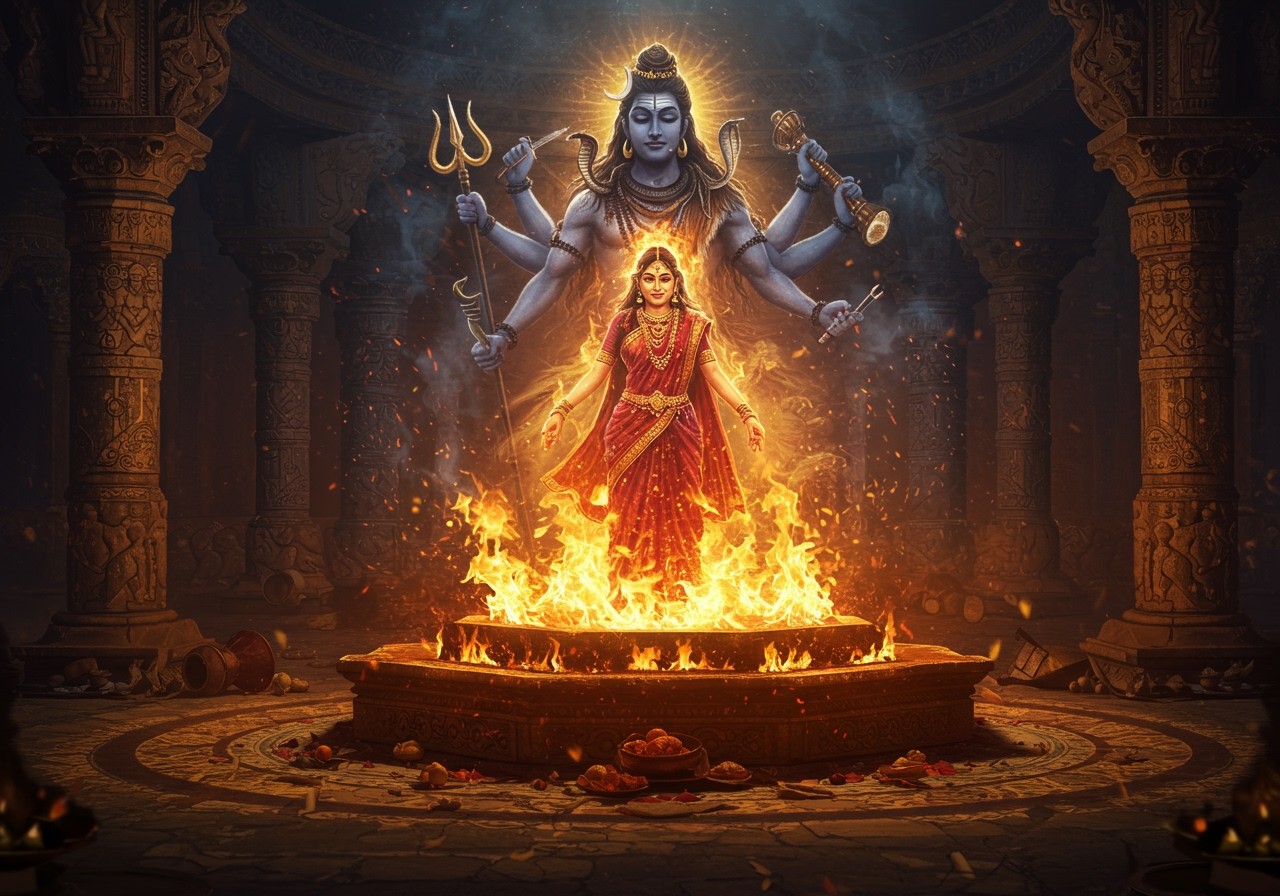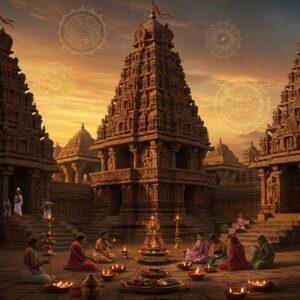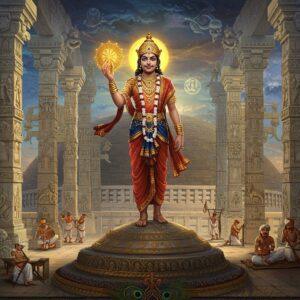
The Daksha Yagna stands as a pivotal event in Hindu mythology, a narrative woven with threads of devotion, disrespect, and divine wrath. This powerful story resonates deeply within our culture, reminding us of the importance of honoring relationships, respecting elders, and understanding the consequences of our actions.
Daksha’s Grand Yagna and the Seeds of Conflict
Daksha Prajapati, a son of Brahma and a prominent figure in Hindu cosmology, decided to perform a magnificent yagna, a sacred ritual of immense significance. Yagnas are powerful offerings to the divine, meant to maintain cosmic balance and bring prosperity. However, Daksha’s strained relationship with his son-in-law, Lord Shiva, would soon cast a dark shadow over this grand event. Daksha, harboring resentment towards Shiva’s unconventional ways, chose to exclude him and Sati from the yagna, setting the stage for a devastating conflict. This deliberate omission was a grave insult, disregarding the sacred bond between father and daughter and disrespecting one of the most revered deities.
Sati’s Arrival and the Unfolding Tragedy
Sati, Daksha’s daughter and Shiva’s beloved wife, found herself torn between filial duty and loyalty to her husband. Despite Shiva’s counsel, her heart yearned to reconcile with her father. Against her better judgment, she decided to attend the yagna, hoping to mend the broken bridge between her family and her husband. Upon her arrival, however, she was met not with warmth, but with open disdain. Daksha, consumed by his ego, publicly humiliated Shiva, his words like daggers piercing Sati’s heart. Overwhelmed by grief and the unbearable insult to her beloved, Sati made a fateful decision. In an act of immense sacrifice and protest, she invoked her divine power and self-immolated in the sacrificial fire, a tragic consequence of Daksha’s pride and arrogance.
Shiva’s Fury and the Destruction of the Yagna
News of Sati’s self-immolation reached Shiva, unleashing a torrent of grief and righteous fury. The universe trembled before his sorrow and rage. From his matted locks, he manifested the fearsome Virabhadra and Bhadrakali, beings of immense power and destruction, and commanded them to avenge Sati’s sacrifice. Leading Shiva’s ganas, they descended upon the yagna, their wrath a tempest of divine justice. The ceremony, once vibrant with ritualistic chants, was transformed into a scene of chaos and destruction. Daksha, the orchestrator of this tragedy, was punished for his hubris, his head severed from his body as a consequence of his actions. The yagna, meant to be a symbol of Daksha’s power, became a testament to the devastating consequences of disrespect and pride.
Dive deeper into Hindu Mythology with stories and bhajans of Lord Shiva and Krishna.
The Aftermath and the Rebirth of Sati
The other deities, witnessing the devastation wrought by Shiva’s wrath, appealed to Brahma and Vishnu to intervene and pacify the grieving god. Through their combined efforts, Shiva’s fury eventually subsided. Daksha, humbled and repentant, was revived, albeit with the head of a goat, a symbolic reminder of his transgression. Sati, in time, was reborn as Parvati, daughter of Himavan, the king of the mountains. This marked a new beginning, a chance for love to bloom again amidst the snow-capped peaks of the Himalayas. Eventually, she was reunited with Shiva, their bond reforged in the crucible of loss and rebirth, their love a beacon of hope and renewal in the cosmic dance of creation and destruction.
Explore the spiritual significance of Bijli Mahadev, Kullu’s electrifying peak.
Honoring the Daksha Yagna Tradition with Poojn.in
Poojn.in understands the profound significance of these ancient narratives and their importance in our lives. We offer a wide selection of authentic puja items and expert guidance, making it easier for you to honor traditions like the Daksha Yagna story with reverence and respect. Browse our curated collection of:
- Pure Copper Kalash: Perfect for abhishekams and other sacred rituals. Explore our collection.
Copper, a sacred metal, enhances the purity of your rituals. - High-Quality Dhoop and Agarbatti: Create a serene atmosphere with fragrant offerings. Find traditional fragrances.
These aromatic offerings symbolize devotion and purify the surroundings. - Traditional Bell-Metal Diyas: Illuminate your puja space with the warm glow of tradition. Discover our Diya collection.
Bell-metal diyas add an auspicious touch to any puja ceremony.
At Poojn.in, we not only provide the necessary items but also offer guidance on ritual procedures, mantra pronunciations, and the significance of each element. We are committed to supporting your spiritual journey by providing authentic products and expert advice.
FAQs about the Daksha Yagna
What was the Daksha Yagna? The Daksha Yagna was a grand Vedic sacrifice organized by King Daksha, a significant event in Hindu mythology known for its dramatic events and impact on the relationships between the deities.
Its significance lies in the ensuing conflict and its impact on the divine hierarchy.
Who destroyed the Daksha Yagna? Virabhadra, created by Shiva’s fury, along with Bhadrakali and Shiva’s ganas, destroyed the yagna as an act of vengeance for Sati’s self-immolation.
Their actions highlight the consequences of disrespecting Shiva and Sati.
What happened to Daksha? Daksha was beheaded by Virabhadra during the destruction of the yagna. Later, due to the pleas of other deities, Shiva relented and revived Daksha, replacing his lost head with that of a goat.
This act symbolizes both punishment and forgiveness.
Why did Sati self-immolate? Sati self-immolated in the yagna fire due to her father Daksha’s public insults towards her husband, Shiva. Unable to bear the humiliation and disrespect directed at her beloved, she chose self-sacrifice as her ultimate protest.
Her act underscores the importance of devotion and the consequences of hurtful words.


